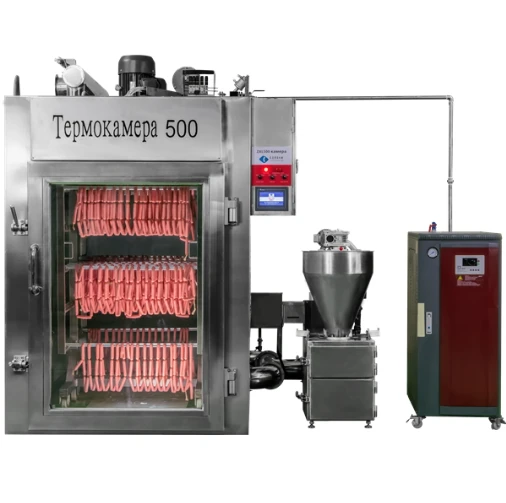- Afrikaans
- Albanian
- Amharic
- Arabic
- Armenian
- Azerbaijani
- Basque
- Belarusian
- Bengali
- Bosnian
- Bulgarian
- Catalan
- Cebuano
- chinese_simplified
- chinese_traditional
- Corsican
- Croatian
- Czech
- Danish
- Dutch
- English
- Esperanto
- Estonian
- Finnish
- French
- Frisian
- Galician
- Georgian
- German
- Greek
- Gujarati
- haitian_creole
- hausa
- hawaiian
- Hebrew
- Hindi
- Miao
- Hungarian
- Icelandic
- igbo
- Indonesian
- irish
- Italian
- Japanese
- Javanese
- Kannada
- kazakh
- Khmer
- Rwandese
- Korean
- Kurdish
- Kyrgyz
- Lao
- Latin
- Latvian
- Lithuanian
- Luxembourgish
- Macedonian
- Malgashi
- Malay
- Malayalam
- Maltese
- Maori
- Marathi
- Mongolian
- Myanmar
- Nepali
- Norwegian
- Norwegian
- Occitan
- Pashto
- Persian
- Polish
- Portuguese
- Punjabi
- Romanian
- Russian
- Samoan
- scottish-gaelic
- Serbian
- Sesotho
- Shona
- Sindhi
- Sinhala
- Slovak
- Slovenian
- Somali
- Spanish
- Sundanese
- Swahili
- Swedish
- Tagalog
- Tajik
- Tamil
- Tatar
- Telugu
- Thai
- Turkish
- Turkmen
- Ukrainian
- Urdu
- Uighur
- Uzbek
- Vietnamese
- Welsh
- Bantu
- Yiddish
- Yoruba
- Zulu
Commercial Meat Chopper Machine Heavy-Duty & High-Capacity Design
- Introduction to Commercial Meat Choppers
- Technical Advantages and Performance Metrics
- Comparative Analysis of Leading Manufacturers
- Custom Solutions for Diverse Business Needs
- Real-World Applications and Case Studies
- Maintenance and Longevity Best Practices
- Future Trends in Commercial Meat Processing

(commercial meat chopper)
Introduction to Commercial Meat Chopper Machines
Commercial kitchens and meat processing facilities rely on heavy-duty equipment to streamline operations. A commercial meat chopper
machine stands out as a cornerstone for businesses requiring consistent output, durability, and efficiency. These machines are engineered to handle large volumes of meat, reduce labor costs, and ensure uniform texture—critical for maintaining product quality in sectors like hospitality, food manufacturing, and retail butchery.
Technical Advantages and Performance Metrics
Modern commercial meat choppers integrate advanced features such as stainless steel blades, variable speed controls, and automated safety mechanisms. For instance, high-end models achieve chopping capacities of 500–1,200 lbs/hour, reducing processing time by 30% compared to manual methods. Energy-efficient motors (3–7.5 HP) lower operational costs, while FDA-compliant materials ensure hygiene compliance. Data-driven designs also minimize waste, with precision cutting reducing meat loss by up to 15%.
Comparative Analysis of Leading Manufacturers
| Brand | Power (HP) | Capacity (lbs/hr) | Price Range ($) |
|---|---|---|---|
| Brand A | 5.0 | 800 | 4,200–5,500 |
| Brand B | 7.5 | 1,200 | 6,800–8,000 |
| Brand C | 3.0 | 500 | 2,900–3,700 |
Custom Solutions for Diverse Business Needs
Not all operations require the same specifications. A small-scale butcher shop might prioritize compactness and affordability, whereas a large meatpacking plant demands industrial-grade horsepower and continuous operation capabilities. Manufacturers now offer modular designs, allowing businesses to add attachments like grinders or mixers. Custom blade configurations (e.g., fine vs. coarse chopping) further enhance versatility, enabling tailored solutions for sausages, patties, or ready-to-cook meal kits.
Real-World Applications and Case Studies
A regional food processor reported a 40% increase in output after upgrading to a meat chopper commercial unit with automated feeding. Another case involved a hotel chain reducing prep time by 25% by integrating a dual-speed chopper into its central kitchen. Such examples underscore the ROI potential of investing in purpose-built equipment. Additionally, facilities adhering to HACCP standards benefit from machines with self-cleaning functions, reducing downtime between batches.
Maintenance and Longevity Best Practices
Regular maintenance extends the lifespan of commercial meat choppers. Key steps include daily blade sharpening, lubrication of moving parts, and inspection of electrical components. Manufacturers recommend replacing belts and bearings every 1,200 operating hours. Proper training for operators—such as avoiding overloading the hopper—can prevent 80% of common mechanical issues, ensuring uninterrupted service for 8–10 years.
Future Trends in Commercial Meat Processing
Innovations like AI-driven predictive maintenance and IoT-enabled commercial meat chopper machines are reshaping the industry. Sensors that monitor blade wear or motor temperature in real time can preempt breakdowns, reducing repair costs by up to 50%. Sustainability is another focus, with manufacturers developing energy-recovery systems and recyclable components. As demand for plant-based alternatives grows, adaptable choppers capable of processing hybrid meats and vegetables will gain traction.

(commercial meat chopper)
FAQS on commercial meat chopper
Q: What factors should I consider when buying a commercial meat chopper machine?
A: Prioritize motor power, capacity, durability, and ease of cleaning. Ensure it meets your kitchen’s volume needs and complies with food safety standards.
Q: How do I maintain a commercial meat chopper for optimal performance?
A: Clean blades and parts after each use, lubricate moving components regularly, and inspect for wear or damage. Follow the manufacturer’s maintenance guidelines.
Q: What is the average capacity of a commercial meat chopper?
A: Capacities range from 5-20 liters, depending on the model. Choose based on your daily production needs to avoid overloading the machine.
Q: Can a commercial meat chopper handle frozen or tough meats?
A: High-end models with powerful motors (1,000+ watts) can process frozen or tough cuts. Check the machine’s specifications before use to avoid damage.
Q: Are commercial meat choppers easy to clean and sanitize?
A: Most models feature detachable, dishwasher-safe parts. Stainless steel blades and surfaces simplify sanitizing, ensuring compliance with hygiene standards.
-
Premium Frozen Meat Slicer for Home & Commercial UseNewsAug.04,2025
-
Efficient AI-Enhanced Meat Conveyors | GPT-4-TurboNewsAug.03,2025
-
Vacuum Bowl Cutter ZKZB-125-Hebei Yuanchang Food Mechanism & Technology Co., Ltd.|Vacuum Chopping, Meat ProcessingNewsAug.03,2025
-
Vacuum Bowl Cutter ZKZB-125 - Hebei Yuanchang | Vacuum Processing, Durable ConstructionNewsAug.03,2025
-
Vacuum Bowl Cutter ZKZB-125 - Hebei YuanchangNewsAug.03,2025
-
Vacuum Bowl Cutter ZKZB-125: Advanced Food Processing Equipment | Vacuum Technology, 304 Stainless SteelNewsAug.03,2025










